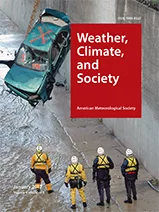Sagebrush ecosystems have endured fragmentation and degradation from multiple disturbances. Climate change poses an additional threat that can exacerbate current stresses. Web-based climate applications can provide information to help land managers prepare for challenges. To develop useful and usable tools for land managers’ needs, the collaboration of scientist, web tool developer, and user is needed. Climate scientists and web tool developers at Conservation Biology Institute (CBI) worked with Oregon and Idaho Bureau of Land Management (BLM) sagebrush land managers assessing managers’ needs and defining criteria for useful and usable web-based climate applications. During phone interviews, land managers evaluated a series of climate related web applications and provided insight on how future applications can best meet their needs. They identified climate variables associated with their management activities, such as the seasonality of precipitation and temperature. They provided feedback about website accessibility, terminology, climate model description, spatial and temporal scale appropriateness, graphics effectiveness, and general content credibility and consistency. Managers are interested in changes in climate, but also in climate change impacts, such as vegetation shifts. Managers need seasonal and multiannual weather forecasts for routine activities and 10–20-yr climate projections for planning exercises, but currently an information gap exists between available weather forecasts (#12 months) and climate projections (30-yr averages). It was also found that scientific jargon contributes to misunderstandings and misinterpretation of climate information, and this study confirmed the need for better climate science education, through enhanced explanation and collaborative efforts that promote understanding and use of existing web applications.
BLM Sagebrush Managers Give Feedback on Eight Climate Web Applications



